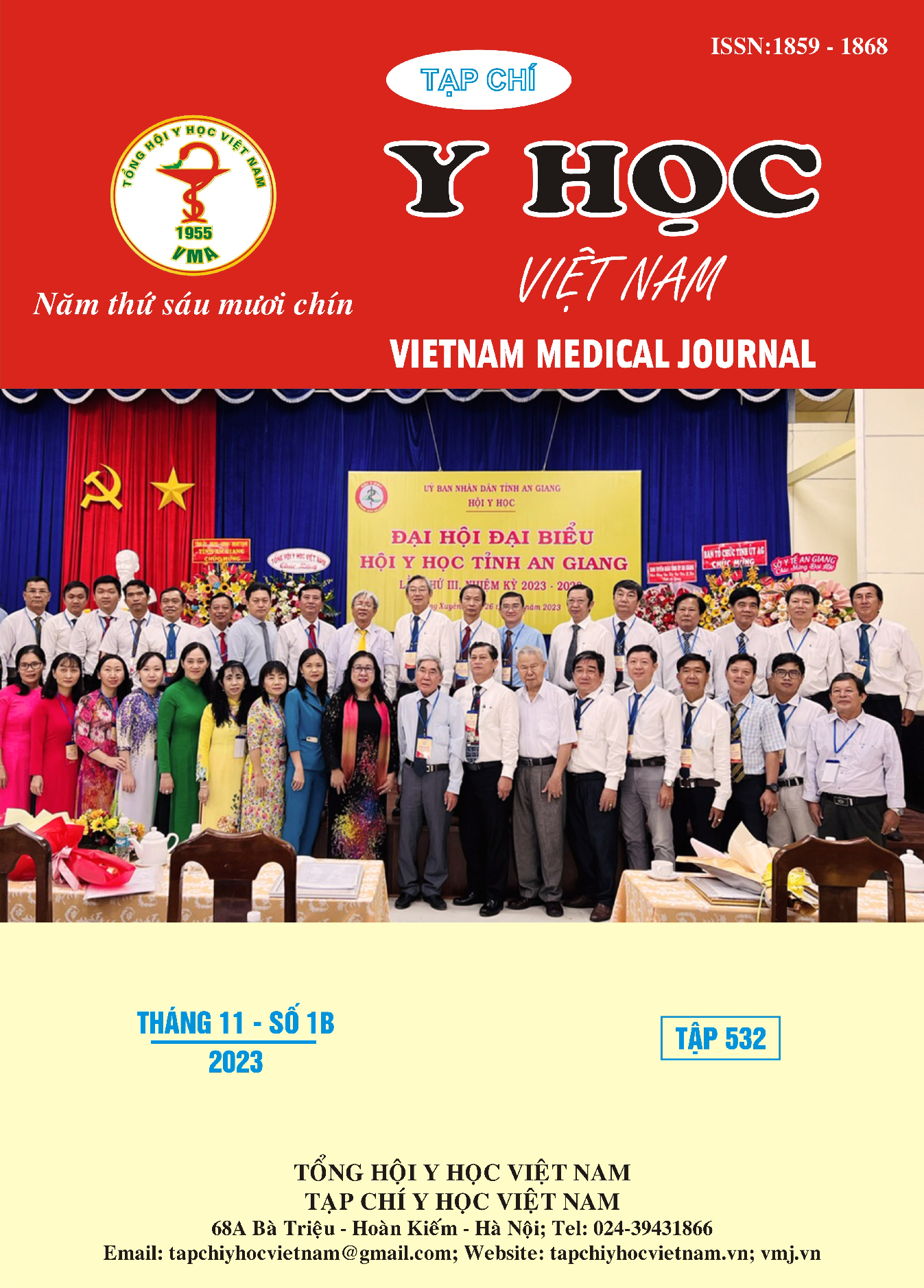SHORT-TERM OUTCOMES OF ENDOVASCULAR INTERVENTION FOR INFRAPOPLITEAL PERIPHERAL ARTERY DISEASE AT CLINICAL STAGE IV OF FONTAINE CLASSIFICATION
Main Article Content
Abstract
Backgroud: Peripheral Artery Disease (PAD) is a common disease in the elderly, progressing silently and recurring many times. Stage IV PAD according to Fontaine is the late, most severe stage of lower limb vascular disease, causing disability and leading amputation rate, reducing the patient's quality of life. Objectives: To determine the initial and short-term results of treatment for endovascular intervention of Infrapopliteal PAD at clinical stage IV of Fontaine classification. Subjects and methods: A retrospective descriptive study was conducted on patients with Infrapopliteal PAD at clinical stage IV of the Fontaine classification who underwent endovascular intervention at Cardiovascular and Thoracic Center, Viet Duc University Hospital from January 2022 to April 2023. Results: A total of 53 limbs at Fontaine stage IV from 51 patients (age 76.6 ± 14.5 years) underwent endovascular intervention at the below-the-knee levels, with a male/female ratio of 22/29. The main risk factors were smoking 31.3%, hypertension 74.0%, diabetes 51% with Rutherford classification 5 and 6 rates being 83% and 17%. The proportion of complex lesions TASC II C accounted for 72%, TASC II D accounted for 5.7%. The ankle brachial index (ABI) before and after intervention was 0.20 ± 0,08 and 0.72 ± 0.38, respectively (p < 0.05), intervention time was 32.0 ± 7.4 (from 25 - 51) minutes. The ratio of the number of arteries below the knee to be intervened includes one vessel 18.9%, two vessels 43.4%, three vessels 37.7%. Among the intervened vessels, the anterior tibial artery accounted for 38.8%, the posterior tibial artery for 31.9%, and the peroneal artery for 29.3%. The number of legs treated at the thigh level accounted for 43.4%, the below knee level accounted for 100%. The rate of Fontaine stage 1 month after intervention was IIa (68%), IIb (28%), III (4%) and the wound healing rate was 92%. The rate of complications after intervention included 3.9% upper leg amputation, 23.5% toe amputation, 2.0% limb infection after intervention, 5.9% post-intervention restenosis and 7.8% of hematomas at the puncture site, no patients died or had kidney failure after intervention. Conclusion: Endovascular intervention for infrapopliteal arteries proves to be a safe and effective procedure for treating symptomatic PAD. Nevertheless, a larger sample size and further studies are required for confirmation.
Article Details
Keywords
Infrapopliteal, TASC II (Trans Atlantic Inter-Society Consensus II).
References
2. Criqui MH, Matsushita K, Aboyans V, et al. Lower Extremity Peripheral Artery Disease: Contemporary Epidemiology, Management Gaps, and Future Directions: A Scientific Statement From the American Heart Association. Circulation. 2021;144(9):e171-e191. doi:10.1161/CIR.0000000000001005
3. Morbach S, Furchert H, Gröblinghoff U, et al. Long-term prognosis of diabetic foot patients and their limbs: amputation and death over the course of a decade. Diabetes Care. 2012;35(10):2021-2027. doi:10.2337/dc12-0200
4. Ruzsa Z, Januszek R, Óriás V, et al. Mortality and chronic obstructive pulmonary disease in patients treated with endovascular revascularization of the infra-inguinal lower limb arteries from retrograde access. Ann Transl Med. 2020;8(5):206. doi:10.21037/atm.2020.01.57
5. Soon SXY, Patel A, Chong TT, et al. Distribution of Peripheral Arterial Disease in Patients Undergoing Endovascular Revascularization for Chronic Limb Threatening Ischaemia: Insights from the Vascular Quality Initiative in Singapore. Vasc Spec Int. 2021;37:13. doi:10.5758/vsi.210016
6. Soga Y, Mii S, Aihara H, et al. Comparison of clinical outcome after bypass surgery vs. endovascular therapy for infrainguinal artery disease in patients with critical limb ischemia. Circ J Off J Jpn Circ Soc. 2013;77(8):2102-2109. doi:10.1253/circj.cj-13-0020
7. Giacoppo D, Cassese S, Harada Y, et al. Drug-Coated Balloon Versus Plain Balloon Angioplasty for the Treatment of Femoropopliteal Artery Disease: An Updated Systematic Review and Meta-Analysis of Randomized Clinical Trials. JACC Cardiovasc Interv. 2016;9(16):1731-1742. doi:10.1016/ j.jcin.2016.06.008
8. Kobayashi N, Hirano K, Nakano M, et al. Predictors of non-healing in patients with critical limb ischemia and tissue loss following successful endovascular therapy. Catheter Cardiovasc Interv Off J Soc Card Angiogr Interv. 2015;85(5):850-858. doi:10.1002/ccd.25625
9. Jaccard Y, Walther S, Anderson S, et al. Influence of secondary infection on amputation in chronic critical limb ischemia. Eur J Vasc Endovasc Surg Off J Eur Soc Vasc Surg. 2007;33(5):605-609. doi:10.1016/j.ejvs.2006.11.027


